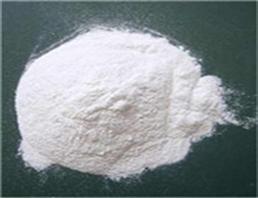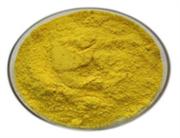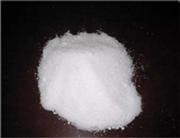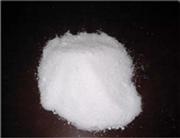1) Product Name: pirfenidone
2) Testing Method: HPLC
3) Appearance: White crystalline powder
The new anti-fibrotic material, with broad-spectrum anti-lung, liver, kidney, heart, and peritoneal fibrosis
Pirfenidone is used to treat a lung disease called idiopathic pulmonary fibrosis (IPF). IPF causes scar tissue to form deep within your lungs. The scar tissue thickens and becomes stiff or thick over time, which can make it harder for your lungs to work. Decreased lung function can make it hard for you to breathe. Other medical problems can occur when your brain, heart, and other organs do not get enough oxygen.
The cause of IPF is often unknown, but this condition is a progressive disease that can be fatal. Pirfenidone is not a cure for IPF, but this medicine may slow the progress of this disease.
Pirfenidone may also be used for purposes not listed in this medication guide.
Application
In vitro, pirfenidone can inhibit the uterine flesh tumour cells and leiomyoma cells proliferation. Pirfenidone can inhibit the TGF - beta - 1 inducing fibroblast collagen formation. Inhibition of PDGF, FGF and TGF - beta - 1 inducing fibroblast proliferation. In hamster model, pirfenidone, taken by mouth, that can the prevention and treatment of pulmonary fibrosis induced by bleomycin. Pirfenidone can prevent the sclerosing peritonitis in rats induced by chemical, can also be keloid grafting for the treatment of nude mice. Pirfenidone 0.01 1 mg/ml can suppress the matrix and dose dependent manner serum stimulate uterine fibroids and leiomyoma cell DNA synthesis, the compound has no cytotoxic effect, has no effect on collagen mRNA level also. Pirfenidone in hamster pulmonary fibrosis model can reduce the disease before the collagen I mRNA level enhancement, reduce the level of the lung hydroxyproline and malondialadehyde and lung preserved ammonia acyl hydroxylase activity.
Specification
|
Product name
|
Pirfenidone
|
|
Result of Analysis
|
|
Items
|
Specifications
|
Results
|
|
Appearance
|
White or almost white crystalline powder
|
Meets the requirements
|
|
Identification
|
Meets the requirements
|
Meets the requirements
|
|
Melting point
|
106℃-108℃
|
107.3℃-108℃
|
|
Water (K.F)
|
Not more than 0.5%
|
0.09%
|
|
2-hydroxy-5-picoline
|
Not more than 0.15%
|
None
|
|
Any other unspecified
|
Not more than 0.1%
|
0.03%
|
|
Total impurity
|
Not more than 0.5%
|
0.05%
|
|
Bromobenzene
|
Not more than 0.036%
|
0.01%
|
|
Ethyl acetate
|
Not more than 0.5%
|
None
|
|
Heavy metal
|
Not more than 20ppm
|
Less than 20ppm
|
|
R0l
|
Not more than 0.1%
|
Less than 0.1%
|
|
Assay
|
Not less than 98.0%
|
99.5%
|
|
Conclusion
|
Comply with the requirements.
|

 China
China



